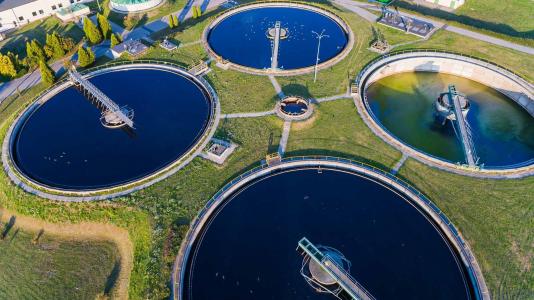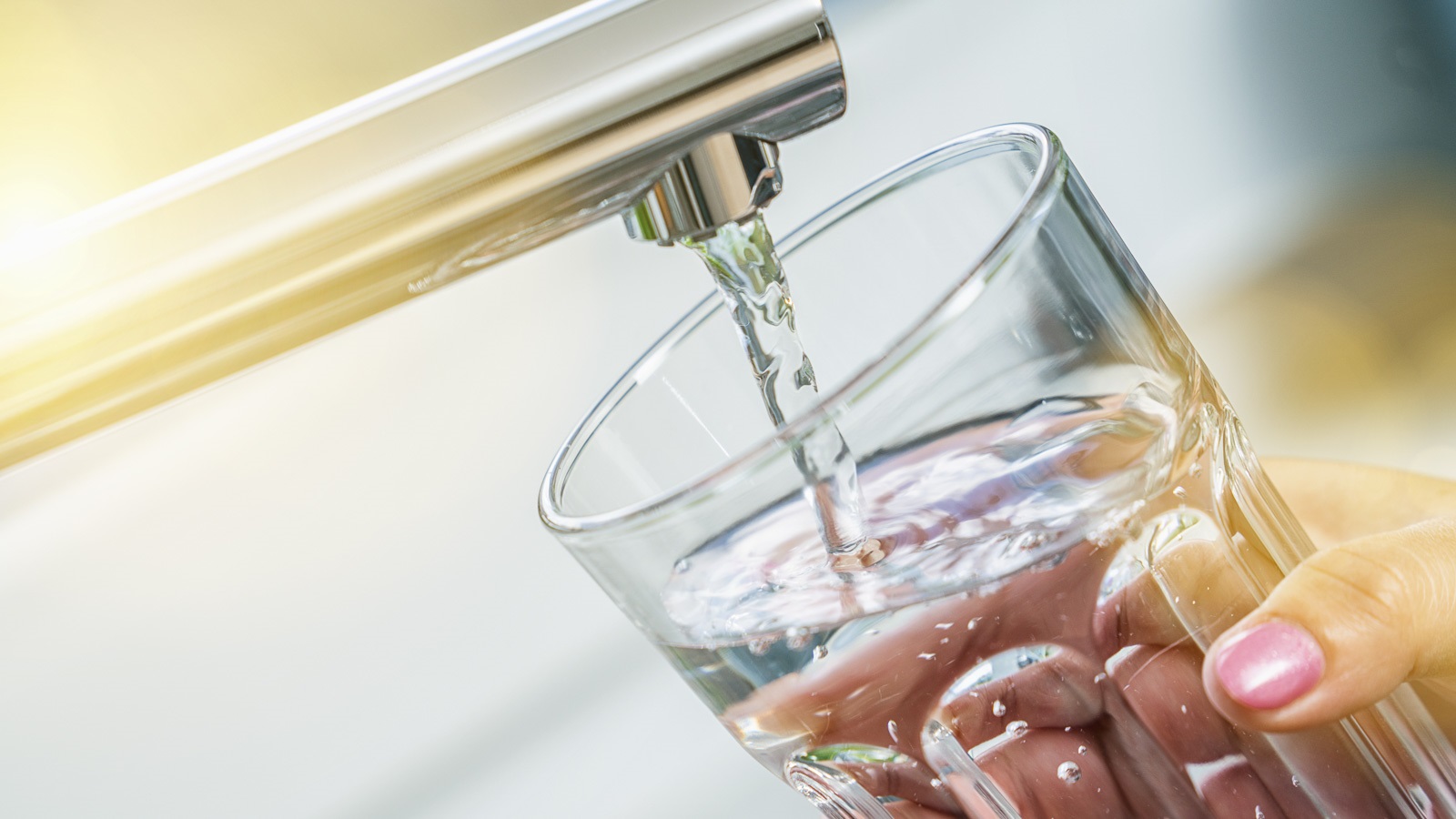Argonne researchers aim to solve problems for the world’s freshwater supply

Water’s value to society goes far beyond quenching thirst. An indispensable resource, it is required not only to sustain life, but also for economic prosperity. Water, for example, is needed to generate energy and to manufacture nearly everything, from food to clothes, cars and electronics. Our future economy and national security highly depend on the availability of clean water.
However, there is a limited supply of renewable fresh water when and where it is needed. Population and economic growth, climate change and urbanization further exacerbate the growing water stress globally.
“Water challenges need to be solved in conjunction with climate change, energy, food and health. So, everyone can contribute to the convergent water solutions.” — Junhong Chen, Argonne lead water strategist, senior scientist
That is why the U.S. Department of Energy’s (DOE) Argonne National Laboratory is working with partners across the country to address water challenges. On World Water Day, March 22, Argonne recommits to this effort and encourages companies, organizations and even individuals to do the same. By realizing water is a precious resource for all, everyone can contribute to the solutions.
One example is Argonne’s innovative Oleo Sponge, developed in 2017. It consists of a polyurethane foam specially treated with oil-adsorbing molecules through an Argonne-pioneered process called sequential infiltration synthesis. The Oleo Sponge can remove spilled oil selectively from a body of water, not only from the surface, but also below the surface, in the water column. It also can be reused again and again by wringing out the oil.
Junhong Chen is the lead water strategist and a senior scientist in Argonne’s Physical Sciences and Engineering directorate. Working with leaders at Argonne and elsewhere to create new partnerships with industry, DOE, other federal sponsors, foundations, academia and other stakeholders, he is growing Argonne’s water research program to help reduce water stress through science and innovation. That research can help in many ways.
For example, Argonne is proposing Great Lakes research to benefit the water supply in communities on Chicago’s South Side. In addition, water quality research with different partners such as the Discovery Partner Institute could contribute to global health, and wastewater-based epidemiology could help monitor community-level infection of diseases, such as COVID-19.
Water challenges need to be solved in conjunction with climate change, energy, food and health. Many partners can contribute to convergent water solutions. And Argonne is uniquely positioned to leverage and continue to build partnerships to address these challenges, said Chen, who is also a Crown Family Professor at the Pritzker School of Molecular Engineering at the University of Chicago.
Four main considerations are important to head off a water crisis, said Chen. First, more research is needed to address water challenges. Second, computing innovations such as artificial intelligence (AI) and machine learning (ML) should be leveraged to advance water research. Third, collaboration between the public and private sector is needed. Finally, we need to expand the public’s understanding that water is connected to climate change, energy, food and health.
“We urgently need scientific and engineering solutions to achieve more efficient management of our precious water resources,” Chen said. “Research and innovation around water conservation, recycling, reclamation and reuse are critical to meeting national needs.”
This is why the White House initiated a DOE-led U.S. Water Security Grand Challenge. Its goal is to advance transformational technology and innovation to meet the global need for safe, secure and affordable water.
At present, there is an exciting, timely opportunity to transform the water and wastewater industry by integrating AI and ML into next-generation water technologies, products, services and utility operations. These types of advances have the potential to produce significant economic, energy and environmental benefits, while tackling the U.S. Water Security Grand Challenge. Both AI/ML and data science cut across the entire water system integration process and can serve as a nexus to connect all the pieces.
As such, Argonne recently launched a 10-year strategy to address the Water Security Grand Challenge in collaboration with its partners, called Water Science and Engineering empowered by Artificial Intelligence (Water + AI). The strategy covers the entire innovation spectrum from fundamental research to enabling technologies and integrated systems.
To meet this vision, the collaboration intends to develop three use-inspired intelligent systems that will drive much-needed societal impacts. The three systems are: (1) Intelligent fit-for-purpose water systems that provide water of the required quality and quantity to meet demand as it is needed; (2) Intelligent water-enabled energy systems that make more intelligent use of the cooling and waste water in power plants, the water involved in hydropower projects and the high-pressure water mixtures in fracking; and (3) Intelligent management systems for water resources that would manage groundwater, surface water, waste water and water in polar regions and the atmosphere.
Performance metrics for these systems will drive research for enabling technologies and fundamental knowledge around six areas: materials, selective separation, sensors and controls, modeling and AI/ML, manufacturing and sustainability.
“Understanding — and ultimately controlling — the interfaces between water and materials will enable the design of advanced membranes, sorbents, sensors and catalysts to efficiently increase supplies of fit-for-purpose water. This challenge represents the mission of the Advanced Materials for Energy-Water Systems Center, an Energy Frontier Research Center, headquartered at Argonne,” said Seth B. Darling, senior scientist and director of Argonne’s Center for Molecular Engineering.
Argonne offers a wide range of expertise under one roof, including materials science, chemistry, physics, biology, engineering, manufacturing, AI/ML, high-performance computing, sustainability analysis and quantum science and engineering. This extraordinarily wide-ranging expertise can be harnessed to address the most complex societal challenges related to water. Also, Argonne has world-class research facilities, such as the Advanced Photon Source, Center for Nanoscale Materials and the Argonne Leadership Computing Facility, all DOE Office of Science User Facilities; as well as the Materials Engineering Research Facility.
Our global water challenge is not isolated, and convergent solutions are needed because because, as Chen noted, they can also address social dimensions, such as environmental justice, policy, economics and human-technology interactions.
“Climate change leads to extreme weather patterns and droughts in some places and heavy rainfall in other places,” said Chen. “Heavy rainfall leads to flooding and water quality issues, challenging our aging water infrastructure across the nation.”
In addition to research taking place at Argonne and other institutions globally, individuals are called to action to help conserve water and mitigate other water challenges, such as minimizing contaminants in the environment, including the use and disposal of plastics, Chen said.
“Everyone can help make an impact regarding our food, health, manufacturing and other aspects of society,” said Chen. “And Argonne is committed to leading with strategies to help solve larger problems that society faces, as well as challenges our local communities face.”
To learn more about Argonne’s water research program, please subscribe to Argonne’s Water + AI newsletter.
Funding for the Argonne-led Advanced Materials for Energy-Water Systems Center, an Energy Frontier Research Center, was from the DOE Office of Science Office of Basic Energy Sciences (BES). The Oleo Sponge research was funded by BES, the Bureau of Safety and Environmental Enforcement and the U.S. Coast Guard.
About Argonne’s Center for Nanoscale Materials
The Center for Nanoscale Materials is one of the five DOE Nanoscale Science Research Centers, premier national user facilities for interdisciplinary research at the nanoscale supported by the DOE Office of Science. Together the NSRCs comprise a suite of complementary facilities that provide researchers with state-of-the-art capabilities to fabricate, process, characterize and model nanoscale materials, and constitute the largest infrastructure investment of the National Nanotechnology Initiative. The NSRCs are located at DOE’s Argonne, Brookhaven, Lawrence Berkeley, Oak Ridge, Sandia and Los Alamos National Laboratories. For more information about the DOE NSRCs, please visit https://science.osti.gov/User-Facilities/User-Facilities-at-a-Glance.
The Argonne Leadership Computing Facility provides supercomputing capabilities to the scientific and engineering community to advance fundamental discovery and understanding in a broad range of disciplines. Supported by the U.S. Department of Energy’s (DOE’s) Office of Science, Advanced Scientific Computing Research (ASCR) program, the ALCF is one of two DOE Leadership Computing Facilities in the nation dedicated to open science.
About the Advanced Photon Source
The U. S. Department of Energy Office of Science’s Advanced Photon Source (APS) at Argonne National Laboratory is one of the world’s most productive X-ray light source facilities. The APS provides high-brightness X-ray beams to a diverse community of researchers in materials science, chemistry, condensed matter physics, the life and environmental sciences, and applied research. These X-rays are ideally suited for explorations of materials and biological structures; elemental distribution; chemical, magnetic, electronic states; and a wide range of technologically important engineering systems from batteries to fuel injector sprays, all of which are the foundations of our nation’s economic, technological, and physical well-being. Each year, more than 5,000 researchers use the APS to produce over 2,000 publications detailing impactful discoveries, and solve more vital biological protein structures than users of any other X-ray light source research facility. APS scientists and engineers innovate technology that is at the heart of advancing accelerator and light-source operations. This includes the insertion devices that produce extreme-brightness X-rays prized by researchers, lenses that focus the X-rays down to a few nanometers, instrumentation that maximizes the way the X-rays interact with samples being studied, and software that gathers and manages the massive quantity of data resulting from discovery research at the APS.
This research used resources of the Advanced Photon Source, a U.S. DOE Office of Science User Facility operated for the DOE Office of Science by Argonne National Laboratory under Contract No. DE-AC02-06CH11357.
Argonne National Laboratory seeks solutions to pressing national problems in science and technology by conducting leading-edge basic and applied research in virtually every scientific discipline. Argonne is managed by UChicago Argonne, LLC for the U.S. Department of Energy’s Office of Science.
The U.S. Department of Energy’s Office of Science is the single largest supporter of basic research in the physical sciences in the United States and is working to address some of the most pressing challenges of our time. For more information, visit https://energy.gov/science.

